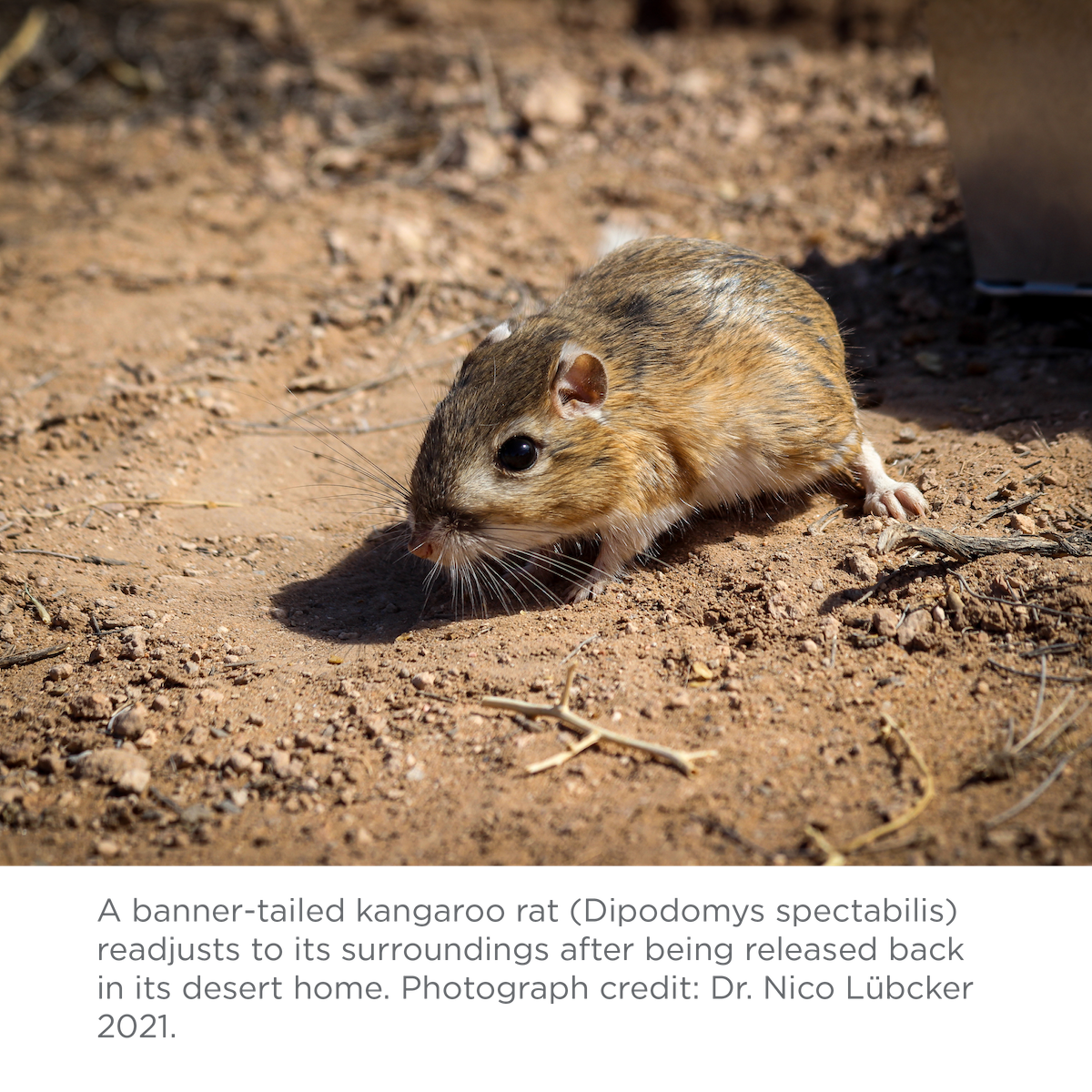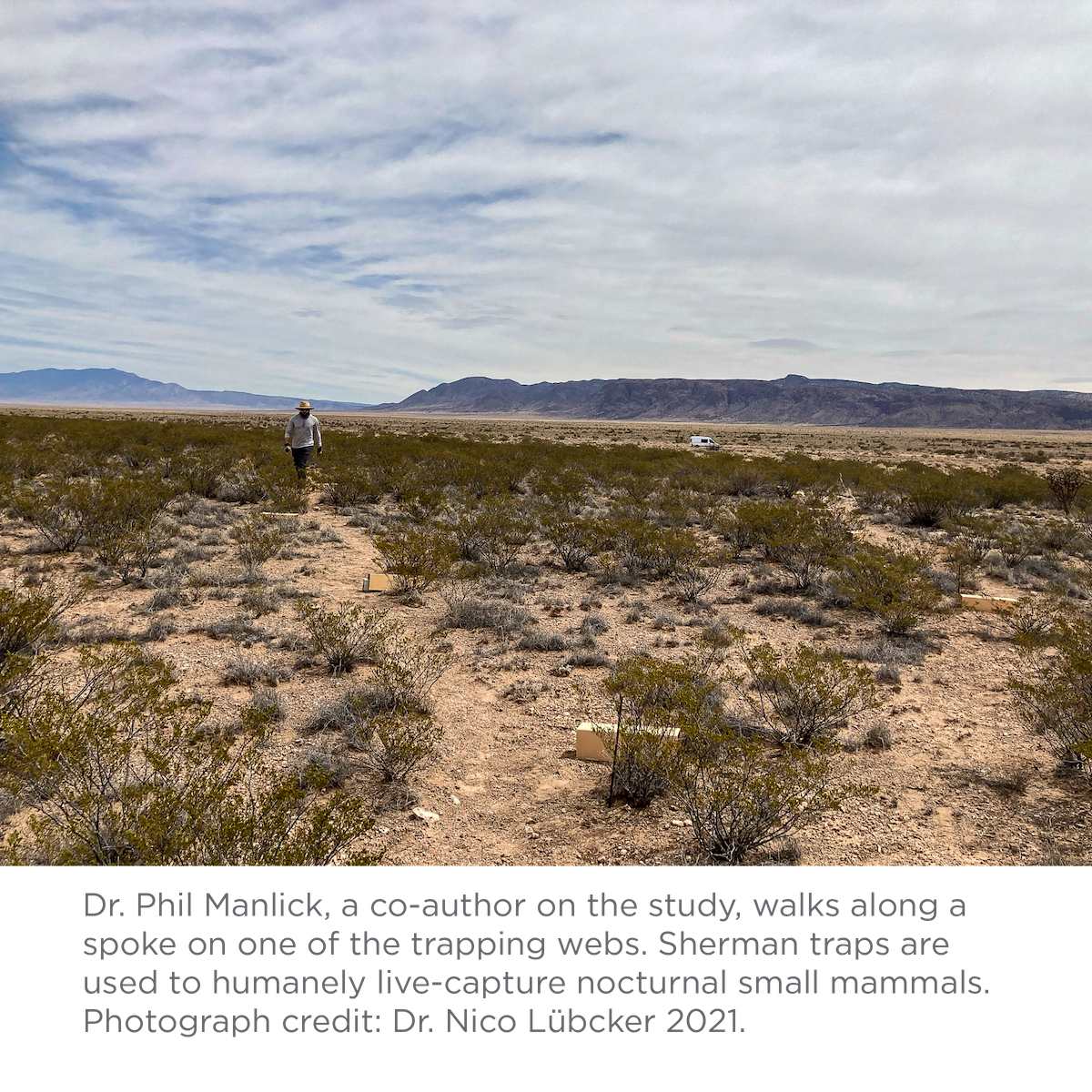New study is first of its kind to trace amino acids synthesized by gut microbes in wild animals
June 8, 2023 - Irene Gray
 The role of the gut microbiome in our health has become an important topic in recent years, but a new study out of The University of New Mexico is the first of its kind to look at how it supports animals in the wild who are dealing with variable food resources.
The role of the gut microbiome in our health has become an important topic in recent years, but a new study out of The University of New Mexico is the first of its kind to look at how it supports animals in the wild who are dealing with variable food resources.
The study, titled, “Variation in gut microbial contribution of essential amino acids to host protein metabolism in a wild small mammal community”, is published in Ecology Letters and was spearheaded by 2022 PhD alumna of the Department of Biology, Alexi Besser.
 Besser worked in the Center for Stable Isotopes (CSI) as a student, where the lab is part of an ongoing project at the Sevilleta National Wildlife Refuge near Socorro, NM. Years of data have been collected on the animals that live there and it was through this data that Besser was inspired to look more closely at how the gut microbiome supports protein metabolism in herbivores and omnivores that are often protein-limited.
Besser worked in the Center for Stable Isotopes (CSI) as a student, where the lab is part of an ongoing project at the Sevilleta National Wildlife Refuge near Socorro, NM. Years of data have been collected on the animals that live there and it was through this data that Besser was inspired to look more closely at how the gut microbiome supports protein metabolism in herbivores and omnivores that are often protein-limited.
Associate Director of CSI, Seth Newsome, explains, “For wild mammals, our understanding of the functional role of their gut microbes is limited. Alexi’s work nicely describes a new method for examining how gut microbes mediate the protein metabolism of their host, which her results show could be a critical function for many wild herbivores and omnivores.”
Besser says, ““I never imagined I would be studying gut microbiomes when I started my PhD. I came to The University of New Mexico specifically to work in the Center for Stable Isotopes because I wanted to use stable isotopes to study food webs. I quickly realized I needed to investigate the roles of microbes – both outside and inside of the body – to gain a complete picture of how essential nutrients move through food webs and support animals.”
Nearly a third of wild animals are herbivores, and with the changing environment, many omnivores have less access to protein rich food sources as well. Animals lack the metabolic machinery needed to synthesize essential amino acids, and recent evidence has suggested that gut microbiota play a crucial role in the synthesis of nutrients for their host. Without the ability to make essential amino acids on their own, animals must acquire them from dietary sources or from their gut microbes.
While there have been many studies on this topic in various animal populations, no study had ever been done on a community of wild animals. Besser and her team set out to learn more about the gut microbiome as a potential source of essential amino acids to wild animals.
 To do this, they studied five small mammal species, including three species of kangaroo rats which are herbivores; omnivorous deer mice; and a grasshopper mouse, which survives on insects. All of these animals are native to the northern Chihuahuan Desert of New Mexico.
To do this, they studied five small mammal species, including three species of kangaroo rats which are herbivores; omnivorous deer mice; and a grasshopper mouse, which survives on insects. All of these animals are native to the northern Chihuahuan Desert of New Mexico.
The technique they used for this study is an emerging method, where carbon and nitrogen isotope values – or ratios of the heavy to light isotopes of carbon (13C/12C) and nitrogen (15N/14N) – were measured in amino acids extracted from gut microbes, plants, and small mammal blood in order to determine where small mammals got their essential amino acids from.
Said Besser, “A really exciting aspect of this study is that we isolated gut microbial cells from small mammal feces to measure their amino acid carbon and nitrogen isotope values. Doing so allowed us to directly quantify contributions of essential amino acids synthesized by gut microbiota to their hosts in the wild. Previous studies have relied on data from cultured microbes or have primarily focused on laboratory-raised animals.”
Both the heavy and light isotopes of carbon and nitrogen occur naturally in all living things, but the ratios of these isotopes vary across species and can change with the environment. In the Chihuahuan Desert, for example, there are two major periods of rainfall each year, causing seasonal variation in the types and nutritional quality of plants available to and consumed by animals, which can be traced using carbon and nitrogen isotope analysis.
When consumed, food sources of variable nutritional quality can change the make-up and function of the gut microbiome. This fluctuation is important in the overall health of the host, and can influence how essential amino acids are being synthesized by gut microbes and assimilated into the body of the animal.
 The researchers expected the herbivores and omnivores to receive some essential amino acid contributions from the gut microbiome but were surprised to find that up to 50% of the essential amino acids found in host tissues were synthesized by their gut microbiome. They also expected very little contributions to the carnivorous animals, however, about 20% of the essential amino acids in their tissues were derived from their gut microbiome and not directly from their food sources.
The researchers expected the herbivores and omnivores to receive some essential amino acid contributions from the gut microbiome but were surprised to find that up to 50% of the essential amino acids found in host tissues were synthesized by their gut microbiome. They also expected very little contributions to the carnivorous animals, however, about 20% of the essential amino acids in their tissues were derived from their gut microbiome and not directly from their food sources.
Understanding how the gut microbiome contributes to nutrition acquisition in wild animals is crucial to understanding how animals adapt to seasonal shifts in the quantity and quality of food sources. As Besser, et al, noted in their article, “As plant communities in desert ecosystems change in response to hotter and drier conditions, the gut microbiota of mammalian species living in these environments may be integral to their ability to acclimate to shifting resource landscapes.”
